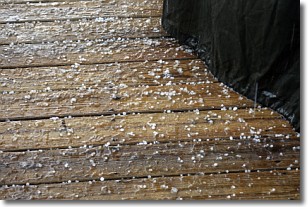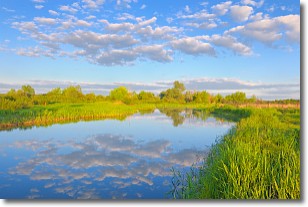Weather Alert in Colorado
Hydrologic Outlook issued June 3 at 9:29AM MDT by NWS Pueblo CO
AREAS AFFECTED: Chaffee, CO; Lake, CO
DESCRIPTION: ESFPUB Risk of enhanced runoff and elevated stream flows from snowmelt ...EXISTING CONDITIONS... Warmer temperatures in the upper Arkansas River Valley has led to accelerated melting of the remaining, near normal mountain snowpack. This trend will likely continue for the remainder of the week. ...PRECIPITATION... Approximately 0.25 to 0.5 inches of rain over the next 72 hours may fall over much of the area of concern. The potential for some rain- on-snow, along with warmer temperatures, could accelerate melting of the remaining snowpack. ...STREAMFLOW CONDITIONS AND RUNOFF FORECASTS... Streams and rivers in the area could see elevated flows of swift, cold water over the next several days. Low lying areas and valley floors could see some minor inundation from snowmelt. Stay away from fast moving water, exercise caution near riverbanks and stay alert to watches and warnings from the National Weather Service. You can also find additional weather and water products and forecasts at the NWS Pueblo website at: Https://www.weather.gov/pub
INSTRUCTION: N/A
Want more detail? Get the Complete 7 Day and Night Detailed Forecast!
Current U.S. National Radar--Current
The Current National Weather Radar is shown below with a UTC Time (subtract 5 hours from UTC to get Eastern Time).

National Weather Forecast--Current
The Current National Weather Forecast and National Weather Map are shown below.

National Weather Forecast for Tomorrow
Tomorrow National Weather Forecast and Tomorrow National Weather Map are show below.

North America Water Vapor (Moisture)
This map shows recent moisture content over North America. Bright and colored areas show high moisture (ie, clouds); brown indicates very little moisture present; black indicates no moisture.

Weather Topic: What is Sleet?
Home - Education - Precipitation - Sleet
 Next Topic: Snow
Next Topic: Snow
Sleet is a form of precipitation in which small ice pellets are the primary
components. These ice pellets are smaller and more translucent than hailstones,
and harder than graupel. Sleet is caused by specific atmospheric conditions and
therefore typically doesn't last for extended periods of time.
The condition which leads to sleet formation requires a warmer body of air to be
wedged in between two sub-freezing bodies of air. When snow falls through a warmer
layer of air it melts, and as it falls through the next sub-freezing body of air
it freezes again, forming ice pellets known as sleet. In some cases, water
droplets don't have time to freeze before reaching the surface and the result is
freezing rain.
Next Topic: Snow
Weather Topic: What are Stratocumulus Clouds?
Home - Education - Cloud Types - Stratocumulus Clouds
 Next Topic: Stratus Clouds
Next Topic: Stratus Clouds
Stratocumulus clouds are similar to altocumulus clouds in their
fluffy appearance, but have a slightly darker shade due to their additional mass.
A good way to distinguish the two cloud types is to hold your hand out and measure
the size of an individual cloud; if it is the size of your thumb it is generally
an altocumulus cloud, if it is the size of your hand it is generally a
stratocumulus cloud.
It is uncommon for stratocumulus clouds to produce precipitation, but if they do
it is usually a light rain or snow.
Next Topic: Stratus Clouds
Current conditions powered by WeatherAPI.com




